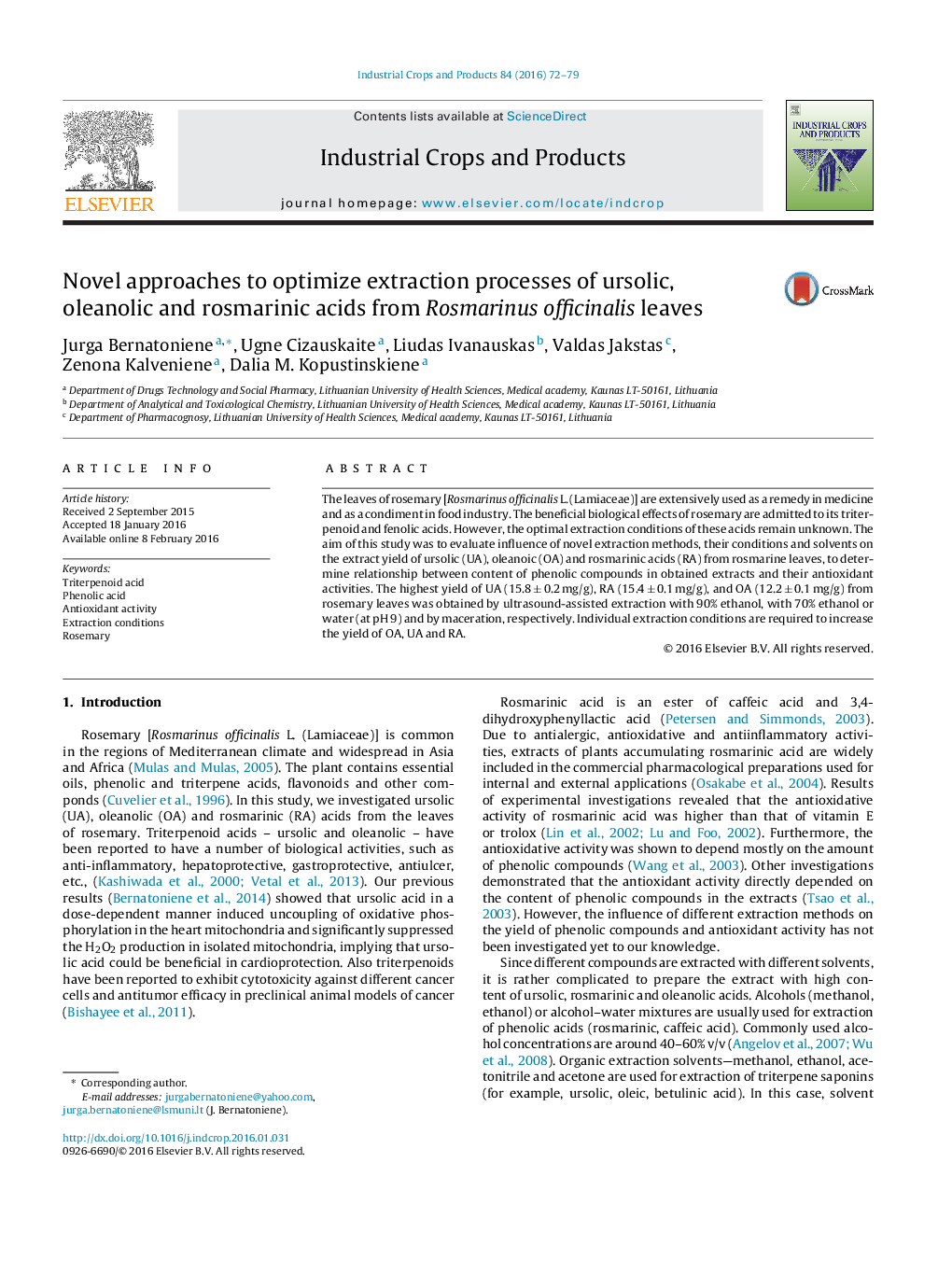| Article ID | Journal | Published Year | Pages | File Type |
|---|---|---|---|---|
| 4512384 | Industrial Crops and Products | 2016 | 8 Pages |
•The highest yield of ursolic acid (UA) is obtained by ultrasonic extraction.•The highest yield of oleanolic acid (OA) was achieved during maceration procedure.•Tween 20 could not be used as a surfactant for OA and UA aqueous extraction.•The highest yield of rosmarinic acid was obtained by ultrasonic extraction.•Aqueous rosemary extracts were characterized with strong antioxidant activity.
The leaves of rosemary [Rosmarinus officinalis L. (Lamiaceae)] are extensively used as a remedy in medicine and as a condiment in food industry. The beneficial biological effects of rosemary are admitted to its triterpenoid and fenolic acids. However, the optimal extraction conditions of these acids remain unknown. The aim of this study was to evaluate influence of novel extraction methods, their conditions and solvents on the extract yield of ursolic (UA), oleanoic (OA) and rosmarinic acids (RA) from rosmarine leaves, to determine relationship between content of phenolic compounds in obtained extracts and their antioxidant activities. The highest yield of UA (15.8 ± 0.2 mg/g), RA (15.4 ± 0.1 mg/g), and OA (12.2 ± 0.1 mg/g) from rosemary leaves was obtained by ultrasound-assisted extraction with 90% ethanol, with 70% ethanol or water (at pH 9) and by maceration, respectively. Individual extraction conditions are required to increase the yield of OA, UA and RA.
